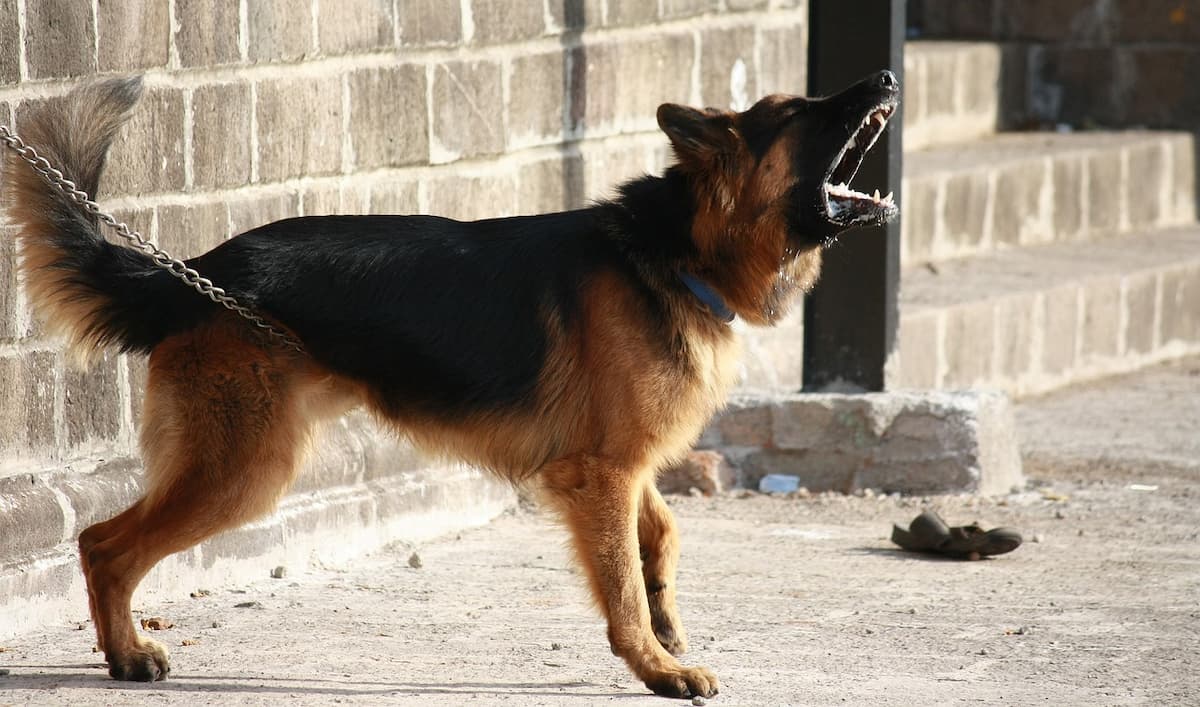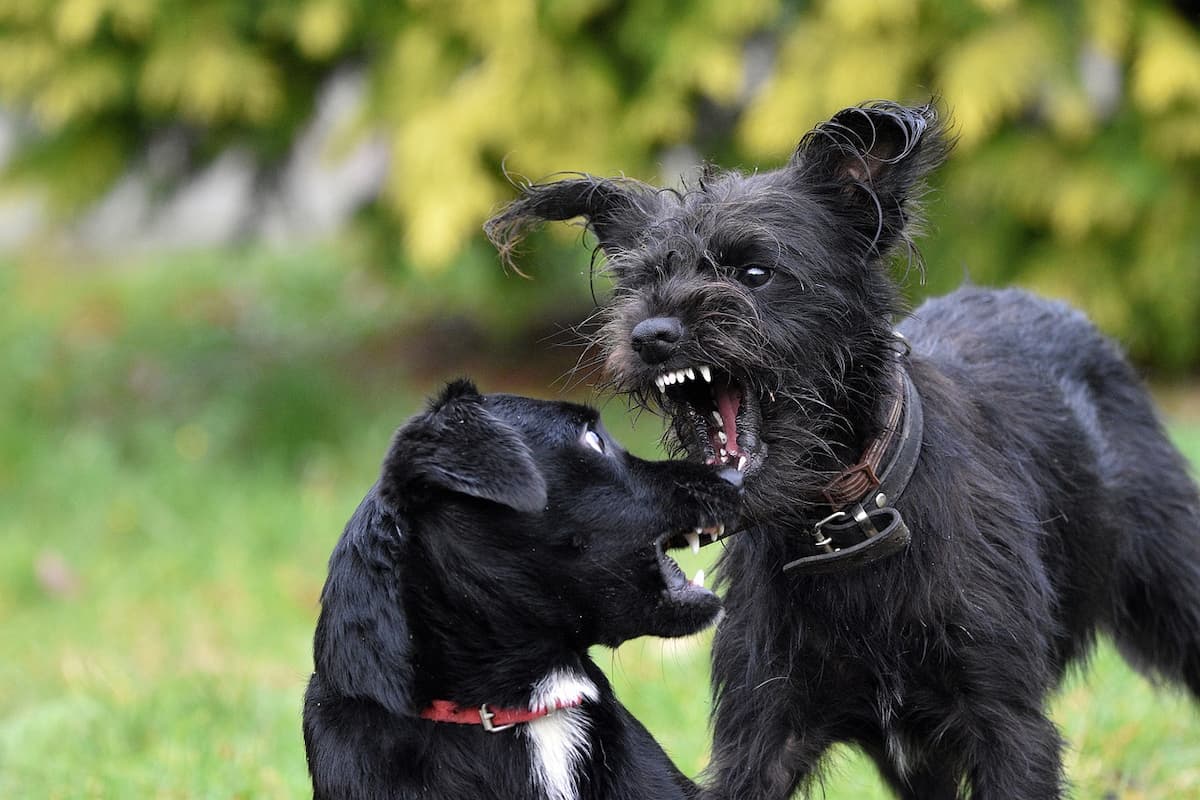Rabies is a deadly disease that no dog owner wants their pets to fall victim to.
This article will explore how the disease functions and answer the question: why do dogs with rabies die after biting?
How Rabies is Transferred through Bites
One of the most intriguing aspects of rabies is the fact that infected dogs tend to die after biting someone.
It’s a puzzling phenomenon that has baffled scientists for years.
To understand why this happens, we need to understand the mechanics of rabies transmission through bites.
When a dog contracts rabies, the virus invades its nervous system.
It travels from the site of the bite, typically entering the bloodstream and eventually making its way to the brain.
This is where the virus replicates and starts to wreak havoc on the dog’s body.
Interestingly, rabies specifically targets the brain and salivary glands, causing a range of symptoms such as aggression, foaming at the mouth, and difficulty swallowing.
Now, when an infected dog bites someone, it transfers the rabies virus-laden saliva into the person’s bloodstream through the wound.
The virus then begins its journey to the person’s brain, just as it did in the dog.
However, the human body is remarkably resilient, and it has a window of opportunity to prevent the virus from reaching the brain and causing the deadly disease.
By promptly seeking medical attention and receiving a vaccine, people can effectively stop the virus in its tracks.
Unfortunately, dogs do not have the same advantage, as there is no cure for rabies once symptoms appear.
Sadly, dogs are commonly infected by their encounters with rabid animals and are one of the primary vectors of the disease.
This is why the phrase “dog bites” is often associated with rabies, as it highlights the method of transmission.
The danger lies not just in the severity of the disease itself, but also in the fact that an infected dog can unknowingly transfer the virus to others, perpetuating the cycle of this deadly disease.
The Consequences of Delayed or Ineffective Treatment
When it comes to rabies, time is of the essence.
Delayed or ineffective treatment can have devastating consequences for both dogs and humans.
If a dog with rabies bites someone and proper treatment is not administered promptly, the outcome can be fatal.
Firstly, rabies is almost always fatal once symptoms appear.
This is why it is crucial to seek medical attention immediately if you have been bitten by a potentially rabid dog.
Once the virus reaches the brain, it begins to spread rapidly throughout the body.
The symptoms often start with fever, headache, and weakness, but quickly progress to more severe symptoms such as anxiety, paralysis, and hallucinations.
Secondly, delaying treatment not only puts the bitten individual at risk, but it also allows the virus to continue spreading in the dog’s body.
Rabies can take up to several weeks or even months to incubate, during which time the infected dog may appear normal.
However, if treatment is not administered during this time, the virus will eventually attack the nervous system, leading to aggressive and unpredictable behavior.
Ultimately, the dog’s immune system will be unable to fight off the virus, resulting in an excruciating death.
Protecting Your Dog and Yourself by Vaccination and Prevention
The importance of prevention cannot be stressed enough when it comes to rabies.
Vaccinating your dog against rabies is essential.
Regular vaccinations ensure that your beloved four-legged companion develops immunity to the virus, protecting both their life and others around them.
Keep in mind that most states have strict laws regarding rabies vaccinations for dogs, and it is your responsibility to follow them.
Additionally, it is crucial to avoid interactions between your dog and potentially infected animals, especially wildlife like raccoons, foxes, and bats.
By distancing your pet from such risks and keeping them up-to-date on vaccinations, you are actively reducing the chances of your dog contracting rabies and subsequently endangering others.
Remember, protecting your dog from rabies is not only about safeguarding their lives but also about ensuring the safety of your family and community.
Vaccinations and preventative measures are your best defense against this deadly disease.
So, check your pet’s vaccination records, consult with your veterinarian if needed, and be proactive in keeping your furry friend and loved ones safe.
Let’s work together to create a world where both dogs and humans can live without the looming threat of rabies.
FAQ
Q: So, what even is rabies?
A: Good question!
Rabies is a viral infection that mainly targets animals, but can potentially infect humans too.
It affects the nervous system, causing inflammation and leading to some pretty scary symptoms.
Q: Why does a dog bite worsen the situation?
A: When a dog with rabies bites someone, it’s not just an innocent chomp.
The saliva of an infected dog contains the rabies virus.
Once the virus enters the human body through the bite wound, it starts spreading like wildfire.
Q: How does the virus attack the body?
A: Picture this: The rabies virus sneaks into your body, and it’s on a mission to find the nervous system.
From there, it begins traveling up towards the brain, where it can wreak havoc.
Q: Why does the virus target the brain?
A: Well, it’s like this virus has a twisted little plan.
By attacking the brain, the virus can effectively influence our behavior and make us bat-crazy.
This makes it easier for the virus to spread when we bite others. It’s like the ultimate trickster move.
Q: What happens once the virus reaches the brain?
A: When the rabies virus finally takes over the brain, it starts replicating like crazy.
This replication process goes beyond control, causing inflammation and damage to the brain tissue.
And that’s where things really start to go downhill.
Q: Can anything be done once the virus reaches the brain?
A: Unfortunately, by the time the virus takes hold in the brain, it’s pretty much game over.
At this stage, the chance of survival becomes incredibly slim, even with the best medical treatments available.
It’s a heartbreaking reality.
Q: Can dogs recover from rabies if they bite someone?
A: I wish I could give you better news, but once symptoms of rabies appear in dogs, it’s usually too late to save them.
By the time they start showing signs like aggression, foaming at the mouth, and paralysis, the virus has most likely spread to their brain.
Q: How do we prevent the spread of rabies then?
A: Ah, great question!
Prevention is key when it comes to rabies.
Vaccinating our pets against rabies is one of the best ways to protect both them and us.
It reduces the chance of infection and lowers the risk of transmission if they bite someone.
Q: What about after being bitten by a potentially rabid dog?
A: Don’t panic, but don’t ignore it either!
Seek medical attention immediately if you’re bitten by a dog that may have rabies.
Doctors have a series of shots that can neutralize the virus before it takes a hold of your body.
Better safe than sorry!
Q: Is it safe to say that dogs with rabies are always dangerous?
A: As sad as it is, once rabies takes over, a dog’s behavior can become erratic, aggressive, and unpredictable.
So, yes, it’s fair to say they become a threat to both humans and other animals.
It’s important to stay away and report any suspected cases to the authorities to prevent further harm.
The Farewell Notes
Rabies is a deadly disease and that poses a serious danger to both dogs and humans.
This vicious virus hijacks the dog’s brain, turning it into a ticking time bomb, ready to explode both in terms of its aggression and the rapid spread of the disease.
The saliva of an infected dog becomes loaded with the virus, and therein lies the ultimate danger: its potential to transmit rabies through a seemingly harmless nip.
However, rest assured that there is hope.
Our collective understanding of this wicked virus has led to an arsenal of preventive measures, from vaccinations and animal control programs to public health campaigns.
By keeping our furry friends protected, we can significantly reduce the risk of rabies transmission, ensuring the safety of both animals and humans alike.
Yes, dogs with rabies face a grim fate.
But thanks to ongoing research, heightened awareness, and responsible pet ownership, we can dare to dream of a future where this deadly disease is relegated to the annals of history.
So let this knowledge empower us to care for our pets, to keep them away from harm’s way, and to contribute to the eradication of this menacing adversary.
Let’s remember to keep a watchful eye, lend a helping hand, and continue striving for a world where all our four-legged companions can enjoy a rabies-free existence.
Stay curious, stay informed, and most importantly, stay safe!












